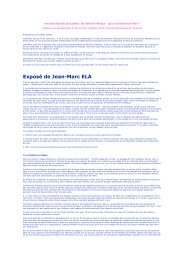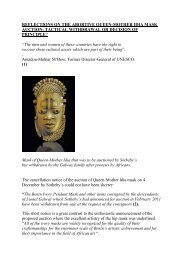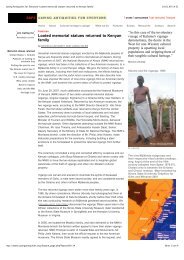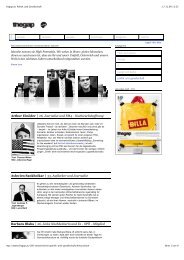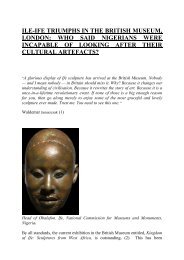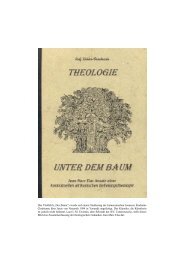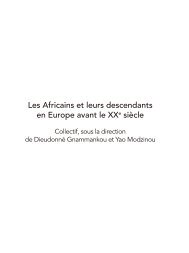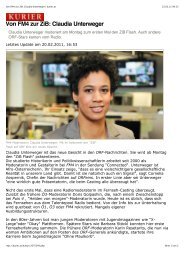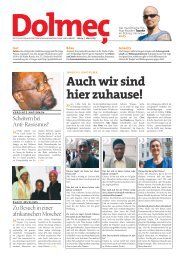White charity
White charity
White charity
- No tags were found...
Create successful ePaper yourself
Turn your PDF publications into a flip-book with our unique Google optimized e-Paper software.
First, the inoculation. This figure is a protection “against invasion by difference” (Sandoval 1997:88). It functions through “admitting the accidental evil” within the dominant group, and thereby“conceal[ing] its principal evil. One immunizes the contents of the collective imagination by meansof a small inoculation of acknowledged evil” (150). Sandoval adds that the inoculation workshomeopathically. According to Arndt (2004: 3), through this figure, difference is acknowledged inorder not to have to question whiteness as a whole. She argues that “inoculation manifests itself inthe so called “colour blindness”, which is built on the tendency that <strong>White</strong>s neither notice their<strong>White</strong> cultural identity, nor reflect or mark it” (Arndt 2004: 3, translation TK).Second, the privation of History. “Myth deprives the object of which it speaks of all History. In it,history evaporates” (151). Myth is not questioning the root or the genealogy of its content, butrather portrays it as eternal. According to Sandoval the estrangement from history “deprives(Western) consciousness of any responsibility for what has and will become”, it creates and evenencourages a “passivity-in-consciousness” (Sandoval 1997: 89). This passivity prevents thedominant subject to recognise her/his own ability of intervention and therefore de-politicisesher/him.With whiteness, the white history of dominance and its present power position is neglected and aneutral view of history free of power relations is constructed. Simultaneously, the Other is deprivedof her/his own history. Through this privation of history, whiteness achieves therefore anaturalisation and through the depersonalisation diverts attention from actors. With a quote fromBritish Prime Minister Blair, Goudge demonstrates both aspects: “These forces [modernisation]driving the future do not stop at national boundaries. Do not respect tradition. They wait for no oneand no nation. They are universal” (Blair 1999, quoted in Goudge 2003: 164).Third, identification is the reduction of all Otherness to sameness. Where the Other cannot bedenied or ignored, the dominant society tries to imagine her/him as same. Barthes however regardsthe strategy of exoticising as an emergency strategy when this reduction is not possible: “The Otherbecomes a pure object, a spectacle, a clown. Relegated to the confines of humanity, he no longerthreatens the security of the home” (152). Through exoticism, a location for the dominantimagination is created. Simultaneously, this rhetorical form permits the dominant “subject tosituate and “identify” itself as living at the center and best of all that yet is” (Sandoval 1997: 91).I would argue that exoticising is a common strategy of whiteness. As a result it constructs a whitecentre with various peripheries around it, in which for example black people find themselvesrepresented as objects. However, with the form of identification, Barthes goes one step further thansimply discussing exoticism. This form implies a constant rearrangement of the imagined locationsof centre and periphery through strategies of assimilation and rejectionism. Not to forget, however,is that whiteness keeps the power to decide with which strategy to encounter the Other.Four, tautology is the definition of “like by like” (152), e.g. “History is History” or “Truth is Truth”(Sandoval 1997: 92). Barthes argues that this strategy is commonly used in emotional situations of18



